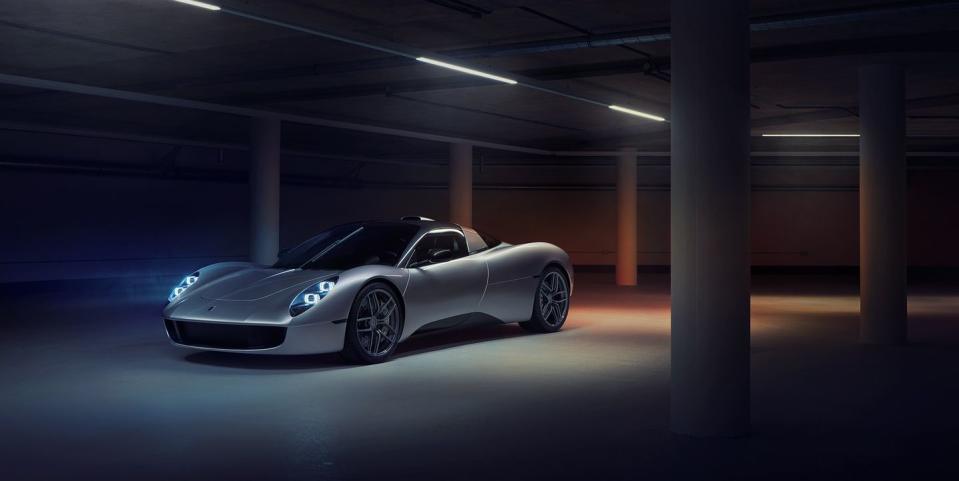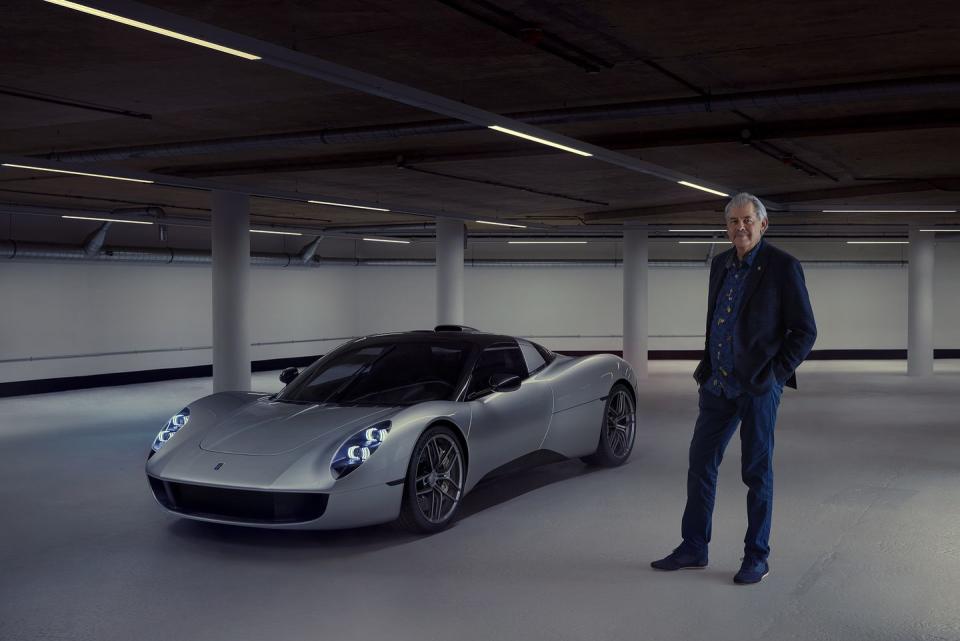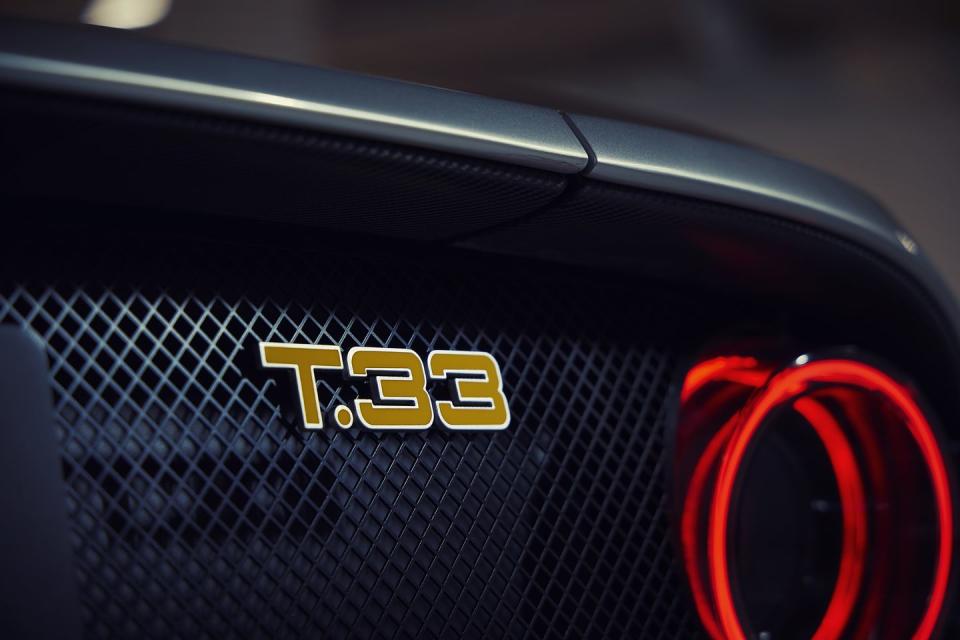Gordon Murray’s Next Supercar Packs a 607-HP V-12 and a Manual


Gordon Murray Automotive first came on the scene with the T.50, Murray’s vision for a current-day McLaren F1 successor. But that’s not the only car he’ll make. Murray’s company has a product roadmap stretching to 2033, and the vehicle you see here is next on the list: The GMA T.33. Like the T.50, it’s a mid-engine supercar, powered by a naturally-aspirated V-12 paired to a manual transmission. It weighs 2400 pounds, makes 607 hp, and costs around $1.85 million.
That makes it, so far, the more affordable of GMA’s two vehicles, positioned beneath the $3 million T.50. Murray told his customers that the T.50 would be unique, even among the highly specialized vehicles this company aims to release—no other GMA would be so lightweight, none would rev so high, and most notably, none would feature the T.50’s distinctive three-seat, center-driver layout. So the T.33 is a conventional two-seater, which allowed Murray to give his newest car evocative proportions.

“I grew up watching sports-racing cars in the Sixties,” Murray tells Road & Track. “And for me, the Italian cars were absolutely it as far as proportion goes. And not just proportions, but the actual classic shapes and curves.” Murray names some of his favorites: The Ferrari Dino 206 SP, P2 and P3; the Alfa Romeo Tipo 33 Stradale and Giulietta TZ1; the Abarth 1000 and 2000 SP. “I’ve always wanted to do a car with those proportions and use all those influences, but in a bang-up-to-date shape.”
The T.33 uses a version of the Cosworth 4.0-liter V-12 engine that powers the T.50. Here dubbed GMA.2, it carries modified heads, new cams, new intake and exhaust, and reworked valve timing. The aim was to make the engine better suited for daily use, with a nice broad torque curve and a lower redline. These things are relative, of course—that “lower” redline is now 11,100 rpm; the GMA.2 has a 14:1 compression ratio, makes 607 hp at 10,500 rpm and 333 lb-ft of torque at 9000 rpm, and delivers 75 percent of its peak torque as low as 2500 rpm and at least 90 percent from 4500 to 10,500. It’s still a clean-sheet, naturally aspirated Cosworth V-12, after all.
Murray is especially proud of the intake design. “I’ve always wanted to do a road car where the airbox is attached directly to the engine and moves independently of the body,” he says. On the T.33, the air intake pokes through the glass engine cover, similar to the track-only GMA T.50S. “When I told [Cosworth] 33 needed to have an airbox like that, there was a lot of silence, pregnant pauses and sucking of teeth,” Murray says, admitting that the request was, in his word, “wacky.” The four throttle bodies sit inside the ram-air box, feeding a separate plenum for each cylinder bank, a setup Murray credits for the GMA.2’s impressive torque curve.
The transverse Xtrac six-speed manual transaxle uses the same casing found in the T.50, with different internals and unique ratios. Unlike the T.50, this model will offer the option of a paddle-shift six-speed sequential automatic, similar to a unit Xtrac builds for touring car racing. Murray claims this transmission offers the world’s fastest gear-change.
“There’s no torque interruption at all,” he says. “Other people talk about 10 milliseconds, 15 milliseconds, three milliseconds. This has zero milliseconds. It’s a completely seamless shift. It’s a pre-selector, so you are already in the next gear.” Still, most buyers have chosen the conventional manual—Murray says over half of the T.33’s 100-car production run is already spoken for, and just three customers have chosen the paddle-shift gearbox so far.

The T.33’s chassis is entirely unique, built according to Murray’s “iStream Superlight” principles. An aluminum tube-frame spans nearly the full length of the car, with bonded carbon-fiber panels making up the passenger compartment and engine bay. Most carbon-fiber supercars use a central carbon monocoque with aluminum or steel front and rear subframes bolted on. “The problem with that is … every time you bolt something, it’s quite complicated and heavy, and it is flexible,” Murray says. In the T.33, the continuous aluminum tube frame has no joints, eliminating this potential for flex, and the bonded carbon fiber adds strength and rigidity where it’s needed.
This chassis, with its metal-and-carbon-fiber construction, ends up about 200 pounds heavier than the T.50’s full-carbon-fiber monocoque, but it will form the basis of multiple future GMA models, including hybrids and EVs. And the T.33 is still an incredibly lightweight vehicle at 2400 pounds—less than a McLaren F1, and as Murray points out, with a power-to-weight ratio that approaches the LaFerrari.


 Yahoo Autos
Yahoo Autos 